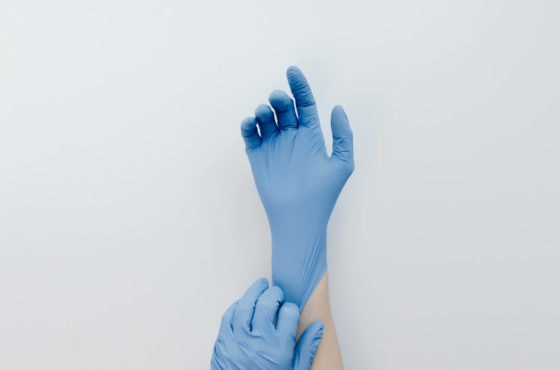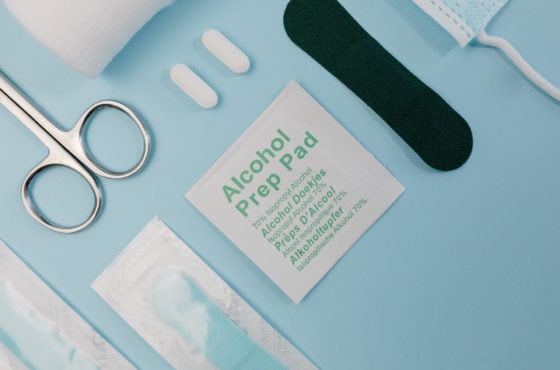Around 12 million wounds are treated each year in emergency departments in the United States. When it comes to wound closure, doctors consider two major options depending on the body part that’s affected: stitches or surgical staples.
For minor wounds, suturing is the most common method of closure. However, doctors have been leaning more on the use of staples lately. After all, these medical devices have been heavily marketed as time savers and are believed to be more convenient compared to stitches when it comes to wound closure.
Upon removal, however, surgical staples require a special tool, unlike stitches which only require a pair of scissors to remove. With staples, it’s also harder to align the edges of a wound. This opens the possibility for wound dehiscence or re-opening of the surgical wound.
Aside from these, however, surgical staplers and staples have also been involved in several malfunction incidents. In fact, the adverse events reported about these medical devices already gave rise to several surgical stapler lawsuits being filed across the country.
Reports of surgical stapler malfunctions are a cause for concern for any patient. But when it comes to staples removal, is there anything else you should prepare yourself for?
Read the article to find out.
When should staples be removed?
In general, staples are removed within 7 to 14 days. It can also depend, however, on several factors, including:
- where your wound is located
- the size of your wound
- how deep your wound is
- your overall health
Furthermore, staples are used for complex wounds that are located on the scalp, trunk, arms, and legs. How long you’ll be told to wait may also vary depending on the surgical site. Particularly, the interval between application of the staples and their removal is as follows:
- Scalp – 7 to 10 days
- Trunk and upper extremities – 7 days
- Lower extremities – 8 to 10 days
Staples on other areas of the body, including the back or belly or over a joint may also need to stay longer, often for a week or two. Be sure to follow your doctor’s instructions and be there when it’s time to remove your staples.
More importantly, never try to remove staples yourself at home. Removing staples is a procedure that should only be done by a licensed medical professional. Your doctor will follow appropriate procedures and medical tools to safely remove the staples while avoiding complications.
Removing Staples
Staple removal requires a sterile technique and a staple extractor. The medical professional doing the removal must also carefully check the wound before the procedure. They must ensure that the wound has healed enough to allow for the removal of staples.
The proper technique in doing the procedure is also important to promote wound healing and to avoid infection, pain, and damage to healing tissue.
In general, when removing your staples, your doctor will follow these steps:
- You will be asked to either sit or lie down during the procedure.
- Place the lower part of the extractor under a staple.
- Squeeze the handles of the staple extractor to close the device. This will bend the staple in the middle. Wiggle it side to side until the edges come out of the skin.
- Gently move the staple away from the surgical site once both edges are visible.
- Dispose of the staple in a clean sheet of gauze.
- Check for wound dehiscence. If none occurs, remove all remaining staples.
- Apply adhesive strips on the area of removal to prevent dehiscence.
The surgical site may still feel tender after the staples are removed. Normally, it should feel better after a few minutes or a couple of hours after the procedure.
Other staples may also stay inside your body permanently. This is mostly done to keep internal organ tissues connected and protected from further damage.
What To Expect After The Procedure
As with sutures or stitches, staples can cause scarring. However, staples can lead to more scarring because they don’t require meticulous cosmetic repair.
This is also the reason why doctors don’t use them on a patient’s face or neck. Scars fade over time. However, in patients who scar easily, the scar from staple use may be more noticeable than one from a suture.
This is especially true if the staples are left in place for a longer period of 5 to 15 days, depending on the location.
It’s important to keep the area clean and follow your doctor’s instructions on proper wound care.
Risks and Complications
- Difficult removal – Staples that have become embedded in the skin may lead to difficulty in removal. Proper initial placement of the staples as well as timely removal of the devices should avoid this complication in most patients.
In rare cases, however, staples can become completely lodged in the skin. In this case, radiographs may be required to locate the buried staple.
After local anesthesia, an incision can be made over the embedded staple so that removal can be done.
- Pain during staple removal – If a patient experiences pain when staples are removed, the doctor can allow small breaks during the procedure.
They can also provide the patient more time to calm themselves by breathing and relaxing during the process.
- Wound infection – Infection is a common complication that a patient may experience after surgery. Some symptoms that are indicative of a wound infection include fever, redness or swelling, pain, warmth at the incision site, and foul-smelling drainage from the wound.
If you experience these symptoms, call your doctor immediately. Infection can also result in a wide array of complications such as increased scarring, delayed wound healing, and longer recovery time.
- Wound dehiscence – This may occur due to several reasons. Some risk factors include age, diabetes, smoking, and even an inexperienced surgeon. Increased physical activity after surgery may also put you at risk for wound reopening.
Activities such as sneezing, coughing, and lifting may put pressure on your wound and can cause them to split open.
What You Can Do
According to the U.S. Food and Drug Administration (FDA)’s Manufacturer and User Facility Device Experience (MAUDE) database, between 2011 and 2018, they received 41,000 adverse event reports related to the use of surgical staplers and staples.
However, an investigative report by Kaiser Health News revealed the existence of a hidden database where 56,000 more reports were kept secret from the public.
Recently, the FDA reclassified surgical staplers and staples for internal use as a Class II device. This means that these devices will now be subject to stricter requirements before they can obtain approval from the regulating agency.
This reclassification reflects the large number of adverse event reports, serious injuries, and deaths related to the use of surgical staplers and staples in previous years.
If you or a loved one underwent surgery with the use of medical staplers or staples and suffered from complications such as infection, internal bleeding, and organ damage, among others, you may have a case against the manufacturer of the device that was used on your surgery.
Contact us today if you wish to know more about how you can pursue legal action. We’re here to assist in finding the right surgical stapler attorney for you.



